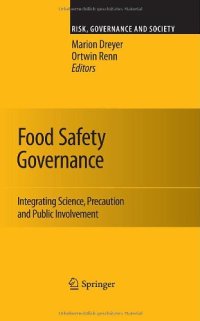
Ebook: Food Safety Governance: Integrating Science, Precaution and Public Involvement
- Tags: R & D/Technology Policy, Quality Control Reliability Safety and Risk, Food Science, European Law/Public International Law, Sociology
- Series: Risk Governance and Society 15
- Year: 2009
- Publisher: Springer-Verlag Berlin Heidelberg
- Edition: 1
- Language: English
- pdf
This book offers a detailed analysis and a set of carefully measured suggestions towards achieving greater integration of science, precaution, and public involvement in current arrangements for European food safety governance. The devised governance framework provides a distinctive system of methodologies, participatory processes, and institutional configurations that demonstrates practical advice of how complex and conflicting food safety demands might be reconciled. At the core of the suggestions for procedural reform is a design with four governance stages (framing, assessment, evaluation, management, with participation and communication as cross-cutting activities), and an organisation into four assessment and management tracks distinguishing between risk-, precaution-, concern- and prevention-based approaches. In addition, the book suggests an innovative food safety interface structure designed to improve the politics-science-society coordination throughout the governance process.
This book offers a detailed analysis and a set of carefully measured suggestions towards achieving greater integration of science, precaution, and public involvement in current arrangements for European food safety governance. The devised governance framework provides a distinctive system of methodologies, participatory processes, and institutional configurations that demonstrates practical advice of how complex and conflicting food safety demands might be reconciled. At the core of the suggestions for procedural reform is a design with four governance stages (framing, assessment, evaluation, management, with participation and communication as cross-cutting activities), and an organisation into four assessment and management tracks distinguishing between risk-, precaution-, concern- and prevention-based approaches. In addition, the book suggests an innovative food safety interface structure designed to improve the politics-science-society coordination throughout the governance process.